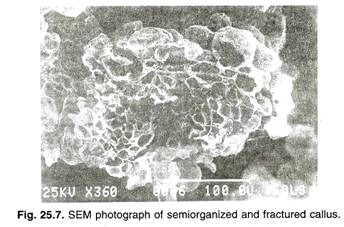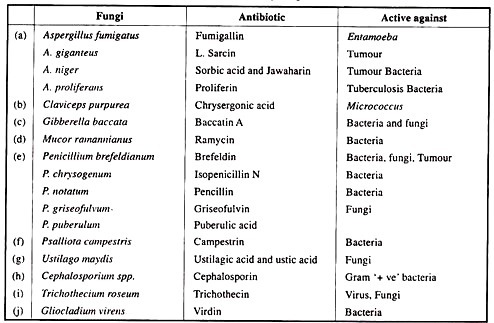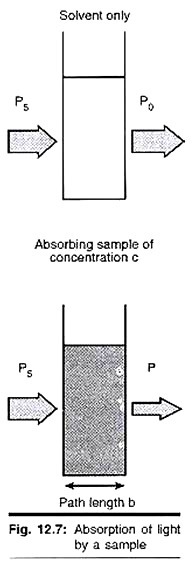Antibodies (or immunoglobulin’s; we will use the two terms interchangeably) are proteins secreted by B lymphocyte-derived plasma cells in response to the appearance of infectious agents in the body’s tissues.
Any substance capable of triggering the production of antibodies is called an antigen, and although antigens can take a variety of different chemical forms, they usually are proteins, polysaccharides, or nucleic acids.
Antigenic proteins are frequently constituents of the surfaces of parasitic cells, fungi, bacteria, and viruses. Many different antigens may be associated with a single infectious agent. Even particles as small as viruses may carry several antigenic sources.
It is the reaction that takes place between antibodies and the foreign antigens that leads to the elimination of the antigen and its source. This reaction is highly specific, that is, a particular antibody usually reacts with only one type of antigen.
Despite its high degree of molecular specificity, the human immune system provides protection against a vast spectrum of antigen sources, for the body’s lymphocytes are capable of making many millions of different kinds of antibodies. The antibody molecules do not usually destroy the infectious agent directly; instead, they “tag” the agent for destruction by other components of the immune system.
Antibodies account for about 20% of the protein present in blood plasma, the most common form being immunoglobulin G or IgG (see Table 25-1). IgG molecules are composed of four polypeptide chains of two different sizes; these are a pair of identical high- molecular-weight chains called heavy chains (or H chains) and a pair of identical low-molecular-weight chains called light chains (or L chains).
The H chains have a molecular weight of 50,000 to 55,000 and contain about 450 amino acids, whereas the L chains have a molecular weight of 20,000 to 25,000 and consist of about 214 amino acids. Each L chain is covalently linked to an H chain by a disulfide bridge, and two light chain-heavy chain pairs are covalently linked by two disulfide bridges (Fig. 25-2). There are also 12 intra chain disulfide bridges, four in each H chain and two in each L chain. An asparagine residue in each H chain is bonded to carbohydrate, so immunoglobulin’s are also glycoproteins.
There are two different types of light chains found in immunoglobulin’s; they are designated kappa (k) chains and lambda (λ) chains. The heavy chains of immunoglobulin’s belonging to the IgG class are of the gamma (7) type, so that an IgG molecule may be represented as either k2y2 or λ 2y2, depending on the light chains that are present. Like IgG molecules, human immunoglobulin’s belonging to one of the other four classes also possess k or λ light chains.
However, the heavy chains of immunoglobulin A molecules (IgA) are alpha (a) chains; in IgD, they are delta (5) chains; in IgE, they are epsilon (e) chains; and in IgM, they are mu (n) chains (Table 25-1). IgG, IgD, and IgE occur as monomers, but IgA molecules may occur as monomers, dimers, or trimers. IgA dimers are held together by another polypeptide called a J chain (“J” for “joining”). IgG molecules may also be linked by a second component called secretory component (Fig. 25-3). IgM molecules occur as pentamers in which the monomeric units are held together by disulfide bridges and by a J chain.
Constant and Variable Domains of an Immunoglobulin:
An analysis of the primary structures of isolated immunoglobulin’s has revealed that they have certain amino acid sequences in common and certain sequences that differ. Amino acid sequences that are common are called constant domains, whereas sequences that vary are called variable domains. Each L chain has one constant and one variable domain, respectively designated CL and VL (Fig. 25-4). Because there are two forms of L chains, namely, k and X, there are also two different constant domains (i.e., constant regions common to k chains and constant regions common to X chains).
Each H chain has one variable sequence (VH) and three constant regions (CH1, CH2, and CH3). It is now known that the three constant regions of the H chains and the hinge are encoded by separate exons (Fig. 25-4). By comparing Figures 25-4 and 25-2, it may be seen that each domain (constant and variable) contains one intra chain disulfide bridge.
At this point it might be best to take stock of what we have said concerning the diversity inherent in the immunoglobulin’s. First, there are five different classes of immunoglobulin’s (i.e., IgA, IgD, etc.) differing in the nature of their heavy chains (i.e., α, δ, ϵ y, and μ; second within each class, the light chains may be of two different types (i.e., k and λ); and third, some of the immunoglobulin’s can occur as polymers. Despite the variation that all of this infers, it still falls far short of the variability that is actually known to exist. As you might suspect at this point, the added variability is due to the differential nature of the variable domains of each L and H chain.
The variable domains of each L and H chain are found near their N-terminals, and this is where the antibody attaches to the antigen. Within each variable region there are three hyper-variable regions, each containing 5 to 10 amino acids. The amino acid sequences in the hyper-variable regions vary more than neighboring sequences in the variable domain (which are called framework regions) and form the antigen- binding sites (Fig. 25-5).
Antibody Diversity and the Genome:
k and λ light chains and α, δ, ϵ y, and μ heavy chains are encoded in separate gene pools, each gene pool containing sets of different C genes, V gene segments, and J gene segments (“J” = “joining”). The k gene pool contains a C gene (C,) and a large number (perhaps several hundred) of V genes (Vk1, Vk2, Vk3 . . . Vkn).
The λ gene pool also contains a C gene (Cλ) and several V genes (Vλ1, Vλ2, etc.). The heavy chain gene pool contains many V genes (VH1, VH2, VH3 … VHn) and a sequence of C genes (Cμ, Cδ, Cy, Cϵ, and Cα) (Fig. 25-6). Each V gene is more appropriately called a V gene segment, because it does not encode an entire variable domain of a chain; this is because there is a small “missing” stretch of DNA called a J gene segment that must be connected to a V gene segment to form a complete V gene.
Each light and heavy chain gene pool contains four J gene segments. The V gene segments are located hundreds of thousands of nucleotides upstream (i.e., on the 5′ side) of the C gene, whereas the J gene segments are located only a short distance upstream of the C gene and are separated from one another by introns (Fig. 25-7).
The assembly of genes expressible as complete variable domains of L chains occurs during the differentiation of lymphocytes into antibody-producing cells and involves the translocation of a V gene segment so that it comes to lie next to a J gene segment. Any V gene segment can be connected to any J gene segment. Primary transcripts may include more than one J gene segment and intron. However, during RNA processing all introns and all J gene segments other than the one whose 5′ side contains the trans located V gene segment are removed (Fig. 25-7).
The genetic basis for the diversity of heavy chain variable domains is somewhat more complex and involves yet another gene segment called a D gene segment (“D” = “diversity”). The formation of an expressible heavy chain variable domain gene requires transnational events that link any of the 20 D gene segments to both a V gene segment and a J gene segment.
In light of the numbers of V, J, and D gene segments and the variety of combinations of these that are expressible as light and heavy chain variable domains, it is easier to comprehend the enormous potential for immunoglobulin diversity. This diversity is amplified by a lack of precision in the machinery for splicing the DNA and an unexpectedly high mutation rate in the variable domains.






